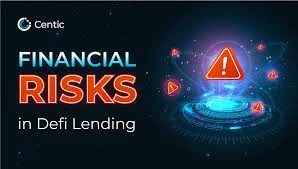Decentralized Finance (DeFi) is a blockchain-based financial system that eliminates intermediaries like banks and brokers, allowing users to engage in financial activities directly with one another. To navigate this complex ecosystem effectively, crypto analysis tools provide critical insights into protocol security, transaction patterns, and market trends. DeFi applications use smart contracts to enable secure and transparent transactions without requiring trust in a central authority, but verifying their safety demands robust crypto analysis tools. The ecosystem includes decentralized exchanges, lending protocols, yield farming, and stablecoins – each requiring specialized analytical platforms to assess risks and opportunities properly.
Benefits of DeFi
- Accessibility: Anyone with an internet connection can access DeFi services without needing a bank account.
- Transparency: All transactions and smart contract code are publicly visible on the blockchain.
- Security: DeFi operates on decentralized networks, reducing the risk of a single point of failure.
- Financial Inclusion: DeFi provides banking-like services to the unbanked population worldwide.
Key Features of DeFi

Key Features of DeFi & How Crypto Analysis Tools Enhance Safety
Decentralized Finance (DeFi) revolutionizes traditional banking through blockchain technology. To navigate this space effectively, crypto analysis tools provide critical insights into protocol health and risks. Here are DeFi’s core features and the tools to analyze them:
1. Permissionless Access
- Anyone can participate without KYC
- Use Nansen (https://www.nansen.ai) to track smart money movements
2. Transparency
- All transactions are on-chain
- Scan activity with Etherscan or BscScan
3. Yield Opportunities
- Earn through staking, lending, or liquidity provision
- Track APYs via ApeBoard (https://apeboard.finance)
4. Composability
- Protocols integrate like “money Legos”
- Monitor dependencies with DefiLlama’s integration maps
5. Smart Contract Automation
- Eliminates intermediaries in transactions
- Verify code using CertiK’s audit reports
6. Volatility & Risk
- Prices fluctuate rapidly
- Set alerts with TradingView or CoinGecko
Popular DeFi Applications

Popular DeFi Applications & Safety Tips Using Crypto Analysis Tools
The DeFi ecosystem offers powerful financial applications, but navigating them safely requires robust crypto analysis tools. Here’s how to interact with top platforms securely:
1. Decentralized Exchanges (DEXs)
- Uniswap & PancakeSwap dominate trading volumes
- Use DEXTools (https://www.dextools.io) to:
• Verify liquidity pool health
• Track whale movements
• Identify suspicious token activity
2. Lending Protocols
- Aave and Compound offer yield opportunities
- Risk mitigation:
• Check collateral ratios via DeFiLlama (https://defillama.com)
• Monitor borrowing rates across platforms
3. Yield Aggregators
- Yearn Finance automates yield optimization
- Safety checks:
• Audit vault strategies using Yearn Watch (https://yearn.watch)
• Compare APYs with APY.vision (https://apy.vision)
4. Derivatives Platforms
- dYdX offers leveraged trading
- Essential tools:
• Track open interest with Laevitas (https://www.laevitas.ch)
• Analyze funding rates to avoid squeezes
5. Cross-Chain Bridges
- Stargate and Synapse enable asset transfers
- Verification steps:
• Confirm TVL via Bridge Scanner (https://bridgescanner.com)
• Check for audit reports before bridging
Critical Safety Practices

Critical Safety Practices Using Crypto Analysis Tools
Navigating the crypto space safely demands more than basic knowledge—it requires leveraging crypto analysis tools to detect risks and verify opportunities. These platforms provide the data-driven insights needed for secure participation in DeFi, trading, and investments.
1. Smart Contract Verification
Before interacting with any protocol:
- Check audit reports via CertiK Skynet (https://skynet.certik.com)
- Review contract ownership status on Etherscan
- Look for red flags like mint functions or high taxes
2. Real-Time Monitoring
Set up alerts for:
- Unusual whale movements (use Whale Alert)
- Sudden liquidity changes (track with DEXTools)
- Security breaches (follow Rekt.news)
3. Portfolio Risk Assessment
- Use ApeBoard (https://apeboard.finance) to:
• Track impermanent loss in liquidity pools
• Monitor collateralization ratios on loans
4. Phishing Prevention
- Verify website authenticity with Scam Sniffer (https://scamsniffer.io)
- Cross-check social media links via Chainabuse
5. Historical Pattern Analysis
- Study token price action with TradingView
- Check developer activity on GitHub
How to Get Started with DeFi
1. Choose a Crypto Wallet
To interact with DeFi, you need a Web3 wallet such as:
- MetaMask (browser extension and mobile app)
- Trust Wallet (mobile app)
- Coinbase Wallet (mobile app)
2. Fund Your Wallet
You’ll need cryptocurrency (usually Ethereum or stablecoins) to start using DeFi platforms. You can purchase crypto through exchanges like Binance, Coinbase, or Kraken and transfer it to your wallet.
3. Connect to a DeFi Platform
Once your wallet is funded, you can connect to DeFi platforms like Uniswap, Aave, or Compound by visiting their websites and linking your wallet.
4. Start Using DeFi Services
- Trading on a DEX: Swap tokens on Uniswap.
- Earning interest: Supply funds to Compound or Aave.
- Staking tokens: Lock tokens in liquidity pools to earn rewards.
Risks of DeFi

While DeFi offers many benefits, it also comes with risks:
- Smart Contract Vulnerabilities: Bugs or hacks can exploit DeFi protocols.
- Impermanent Loss: Liquidity providers may lose funds due to market fluctuations.
- Regulatory Uncertainty: Governments may impose regulations that impact DeFi platforms.
- Scams and Rug Pulls: Some DeFi projects are fraudulent, so research before investing.
Tips for Staying Safe in DeFi Using Crypto Analysis Tools
Navigating DeFi safely requires leveraging powerful crypto analysis tools to identify risks and opportunities. These platforms help investors make informed decisions while avoiding common pitfalls.
1. Audit Verification Tools
- Use DeFiSafety (https://defisafety.com) to check protocol audit quality
- Cross-reference with CertiK Skynet (https://skynet.certik.com) for real-time security scores
2. Portfolio Trackers
- Monitor positions across chains with Debank (https://debank.com)
- Set alerts for suspicious transactions
3. Liquidity Pool Analyzers
- Zapper.fi (https://zapper.fi) visualizes impermanent loss risks
- Check historical APY trends before yield farming
4. Smart Contract Scanners
- TokenSniffer (https://tokensniffer.com) detects honeypots and scams
- Verify contract ownership renouncement
5. Rug Pull Detection
- Track developer wallets with Bubblemaps (https://bubblemaps.io)
- Monitor token distribution fairness
6. Gas Fee Optimizers
- Etherscan Gas Tracker (https://etherscan.io/gastracker) finds low-fee windows
- Schedule transactions during off-peak hours
7. Cross-Chain Comparison
- DefiLlama (https://defillama.com) compares TVL and protocol health
- Identify emerging chains with sustainable growth
Conclusion
DeFi is transforming traditional finance by making financial services more accessible and decentralized. While this space presents exciting opportunities, using reliable crypto analysis tools is essential to navigate its risks effectively. Beginners should leverage platforms like KezTools’ DeFi Analytics Hub to track protocol security, APY trends, and liquidity pool health.
Understanding DeFi mechanics becomes simpler with the right crypto analysis tools. These resources help users verify smart contract audits, monitor impermanent loss, and compare yield farming opportunities. By combining education with powerful crypto analysis tools, investors can safely participate in this revolutionary financial ecosystem while minimizing exposure to scams or volatile markets.